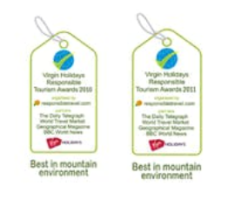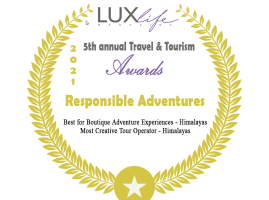Learn how to trek safely in the Nepalese mountains
Updated 13/12/2023.
Here is some advice on remaining safe while trekking/hiking on the trails.
Always walk on the wall side of the trail. You may encounter caravans of pack animals or porters carrying large loads. You wouldn’t want to be pushed off accidentally.
Don’t listen to music using earphones, as this will prevent you from hearing oncoming caravans of pack animals.

When you come across wet stones or rocks with algae on a damp trail, assume it is slippery and possibly dangerous.
You will come across fascinating sceneries, villages, people and wildlife. Stop to admire, observe, or photograph them. Plenty of stones and rocks are on the path; you don’t want to trip on them and injure yourself.
Use Sunblock of factor 30 or more. Have a sun hat, warm hat, waterproof and 2 litres or more water to drink. Camelback is the best equipment to carry water as it provides easy access to water while trekking.
Walk at your own pace. Listen to your breathing. If you are huffing and puffing while trekking, you are going too fast for your lungs. At altitude, you are seriously advised to take it slowly and steadily. If possible, do not ascent more than 300 meters in a day. Have an acclimatization day every 1000 meters. Ascending too fast can lead to Acute Mountain Sickness. Sudden movements can cause you to be breathless or dizzy at a high altitude. Drink plenty of nonalcoholic fluids such as water, juice, hot chocolate, soup, etc. Try to minimize the intake of coffee and tea, as both are diuretics, which cause you to pee more. Do not take medicine with suppressants such as codeine or similar ingredients.

Now and again, trekkers go missing in the mountains. You would not want to be another statistic, would you? DO NOT travel solo in the wilderness. Always inform your embassy or family and friends when you need to go alone and give them your travel route. Inform them of your whereabouts via phone, text, email, or social media when you can access the internet or whenever possible.
When you walk through landslide areas, look above for passing animals, which can cause rock falls.
These precautions can be utilized for trekking safely in Tibet, Bhutan, Ladakh, Sikkim, and Darjeeling in India.
Do not pet or feed animals.
No matter how cute dogs, cows, buffaloes, or other animals look, DO NOT pet them. One can never tell how the animal feels; you might get bitten. If you are trekking during the summer in Ladakh’s rain shadow areas, Upper Mustang, Upper Dolpo, Humla, or Tibet, be careful when you come across sheep or yak herders’ campsites. They have big Tibetan Mastiffs that can be aggressive as they protect their herds and flocks in the high summer pastures. Be careful in early autumn when you approach high-altitude villages of these mastiffs, as they can still be protective when they have just arrived from the summer grazing pastures; they can give you some nasty bites.
















